Recent Articles
Popular Makes
Body Types
10 Ford Mustang Competitors to Consider
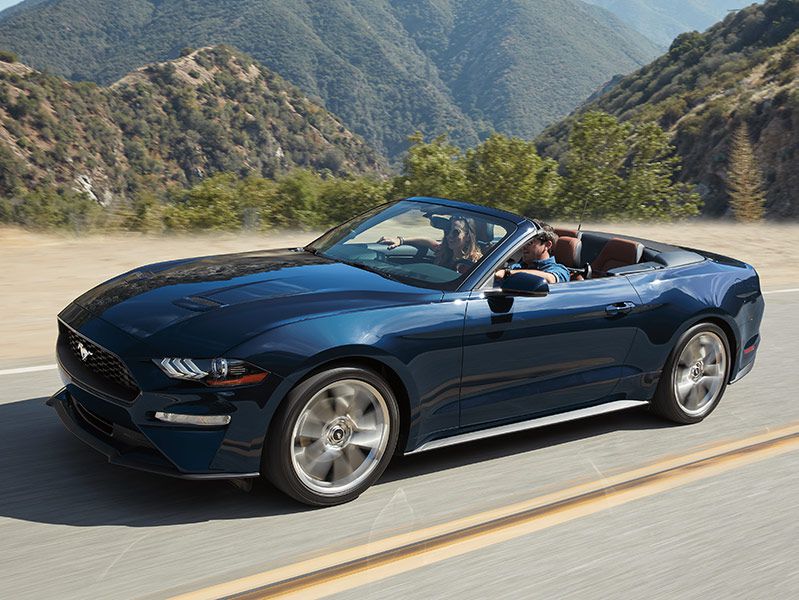
2019 mustang ecoboost convertible profile ・ Photo by Ford
The sixth-generation 2019 Ford Mustang continues the tradition as a sports coupe/convertible with broad appeal, attracting fans from every direction.
Mustang launched its own class of vehicle when it was released as a 1965 model: the pony car. Other manufacturers were forced to follow suit, and soon the marketplace was rife with these compact 2+2 coupes that attracted young drivers. At the same time, the muscle car wars were raging, and Mustang joined the battle lines with higher performance options. Today, the Mustang is available matched with an array of engines from tiny turbo four-cylinders to supercharged V8s and is at the heart of the new muscle car wars. Mustang has also gained handling chops, adopting four-wheel independent suspension after decades of riding on a solid rear axle. And that Mustang style remains unique after all these years.
Here, in alphabetical order by brand, are 10 Ford Mustang Competitors to Consider.
2019 BMW 2 Series
Available in both coupe (starting at $35,300) and convertible (starting at $41,400), the compact 2019 BMW 2 Series could be considered the Bavarian carmaker’s version of the pony car. The 2 Series is available with an eager 2.0-liter inline four-cylinder turbocharged engine (230i features 248 hp/258 lb-ft of torque), or a 3.0-liter turbocharged inline six-cylinder engine (M240i features 335 hp/369 lb-ft of torque), and either rear-wheel drive or xDrive all-wheel drive. An eight-speed automatic with paddle shifters is standard, and a six-speed manual is available.
The convertible boasts a soft top with a glass rear window with integrated defrosting, and can be operated at speeds of up to 30 mph. A performance variant is available from BMW’s M division, the M2 Competition Coupe (starting at $58,900), fitted with a 400-hp 3.0-liter twin turbocharged inline six-cylinder engine, suspension and chassis enhancements, aerodynamic body parts, carbon fiber trim and interior pieces, sport seats, and other performance touches.
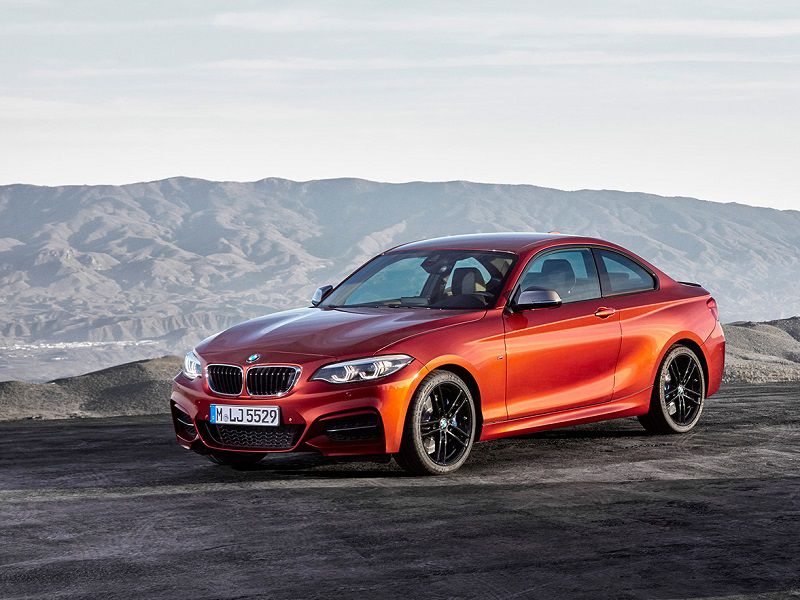
Photo by BMW
2019 Chevrolet Camaro
Camaro was Chevy’s answer to Mustang in the 1960s and the competition has continued through the decades, with the exception of a Camaro hiatus from the 2003 to 2009 model years. The 2019 Chevrolet Camaro is part of the coupe’s sixth generation, which began in 2016.
There are three basic models: LS/LT come with a 275-hp 2.0-liter turbo, or optional 335-hp 3.6-liter V6, and start at $26,400 for coupe/$32,900 for convertible; 1SS/2SS come with a 455-hp 6.2-liter naturally aspirated (non-turbo) V8 and start at $37,995 for coupe/$43,995 for convertible; and ZL1 comes with a 650-hp supercharged 6.2-liter V8 and starts at $62,495 for coupe/$68,495 for convertible.
Six-speed manual transmissions are standard, and 10-speed automatic transmissions with paddle shifters are available. Camaro is styled in a retrofuturist fashion, with lines and a shape that evokes the original first-generation car, but in a much sleeker, lower fashion.
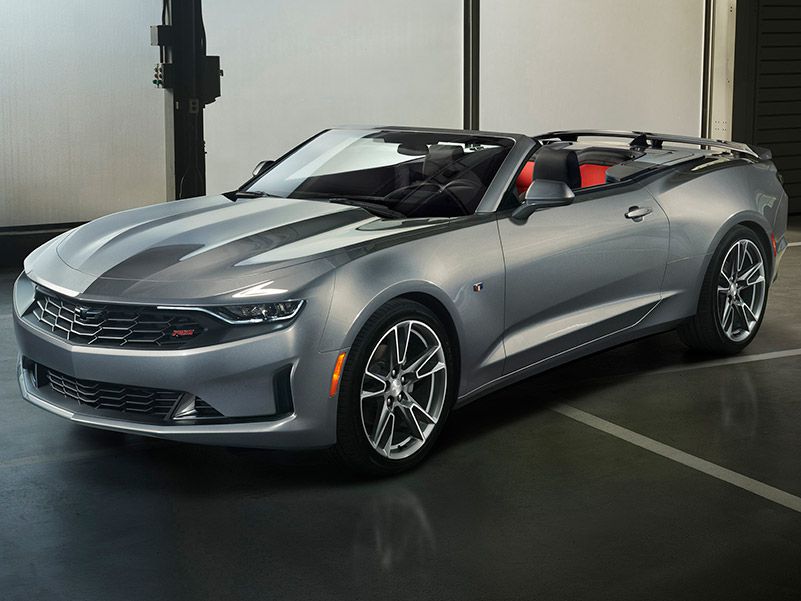
Photo by General Motors
2019 Dodge Challenger
Dodge has used the Challenger name several times, but the current pony car coupe competitor for the Mustang emerged as a 2009 model, and has received tweaks and updates each model year since then.
Like Mustang, the 2019 Dodge Challenger comes with a range of engine choices that send it from mild to wild. Available in eight trim levels starting at $27,295 and going up to $69,650, SXT and GT models come with a 305-hp 3.6-liter V6; R/T models get a 375-hp 5.7-liter HEMI V8; R/T Scat Pack models get a 485-hp 6.4-liter HEMI V8; SRT Hellcat models get a 717-hp 6.2-liter supercharged V8; and SRT Hellcat Redeye models get a 797-hp 6.2-liter supercharged V8.
Challengers are rear-wheel drive, with all-wheel drive available on SXT and GT V6 models only. Six-speed manual transmissions or eight-speed automatics are matched to each engine (except SRT Hellcat Redeye, which is automatic only).
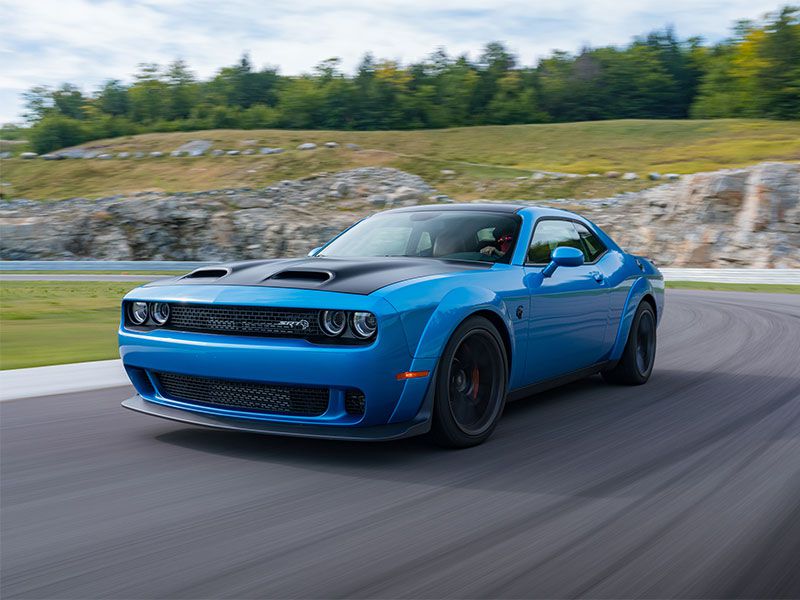
Photo by Dodge
2019 Dodge Charger
Charger is one of three four-door models (including a hatchback) on this list of Mustang competitors. It shares a platform with the Dodge Challenger, and represents a slightly more practical approach to the retro-styled muscle car equation.
There are six Dodge Charger models for 2019, with prices starting at $28,995 and going up to $65,345. Like Challenger, Charger can be ordered with a range of engines, from a 305-hp 3.6-liter V6, to a 370-hp 5.7-liter HEMI V8, to a 485-hp 6.4-liter HEMI V8, all the way up to a 707-hp 6.2-liter supercharged V8.
Each Charger is rear-wheel drive and uses an eight-speed shiftable automatic transmission. Charger is a popular sedan for police pursuit use, thanks to its sedan setup and potent powertrain options.
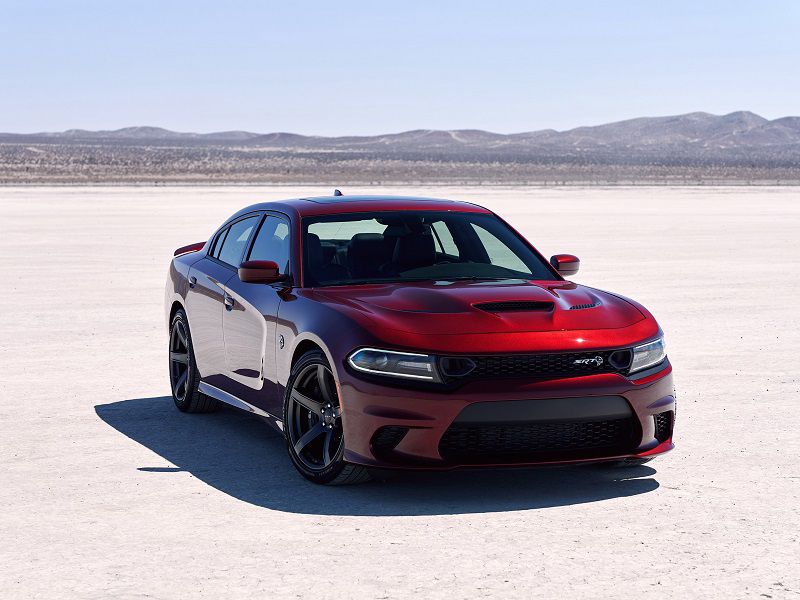
Photo by Dodge
2019 Mazda MX-5 Miata
When it comes to affordable front-engine/rear-wheel-drive roadsters, the Mazda MX-5 Miata is the longstanding champ. Light and maneuverable in a way that Mustang can only dream of, Miata is a competitor that dices and slices when Mustang pounds.
With prices starting at $25,730 for a soft-top convertible and $31,910 for Miata RF with a retractable hard top, Miata comes with a 2.0-liter SKYACTIV-G inline four-cylinder engine (181 hp/151 lb-ft of torque) that is naturally aspirated (non-turbo), hooked up to a choice of six-speed manual or automatic transmissions.
Curb weights for Miata convertible are 2,339 lbs (MT)/2,388 lbs (AT), and 2,453 lbs (MT)/2,493 lbs (AT) for Miata RF – more than 1,200 lbs lighter than comparable Mustang variants. The difference in weight offers a vastly different driving experience in the two competitors – a difference that serious drivers will want to compare and consider.

Photo by Mazda
2019 Nissan 370Z
Like its competitor Ford Mustang, the 2019 Nissan 370Z traces its heritage back to the 1960s, inspired by the classic Datsun 240Z of 1969. Known in Japan as the Fairlady Z, the Z car was revived in 2002 as the 350Z and updated to the current 370Z in 2009.
370Z is available as a two-seat coupe starting at $29,990 and as a convertible two-seat roadster starting at $41,820. All 370Z models come with a 3.7-liter V6 engine and rear-wheel drive. Coupes and convertibles come with engines tuned to produce 332 hp and 270 lb-ft of torque, while Nismo versions of the coupe produce 350 hp and 276 lb-ft of torque.
A choice of six-speed manual or seven-speed automatic transmissions is available in the coupe models, while convertibles come with a seven-speed automatic only.
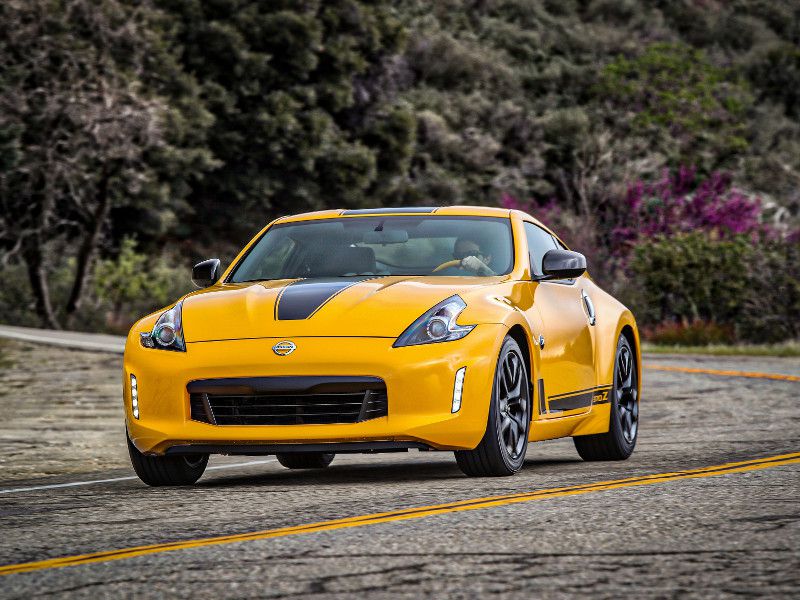
Photo by Nissan
2019 Kia Stinger
When it made its debut as a 2018 model, the Kia Stinger fastback sedan was an unexpected surprise as the first performance vehicle in the Korean automaker’s lineup.
Riding on a front-engine/rear-drive platform with all-wheel drive available, the sporty 2019 Kia Stinger comes in five models starting at $32,900 and going up to $49,990. 2.0L and Premium models come with a 2.0-liter turbocharged inline four-cylinder engine (255 hp/260 lb-ft of torque), while GT, GT1 and GT2 models come with a 3.3-liter twin turbo V6 engine (365 hp/376 lb-ft of torque). An eight-speed automatic transmission is standard across the board.
Stinger displays superb handling and balance, and has impressed critics with its performance on famous road courses like Germany’s Nürburgring, while delivering fun-do-drive qualities on the street.
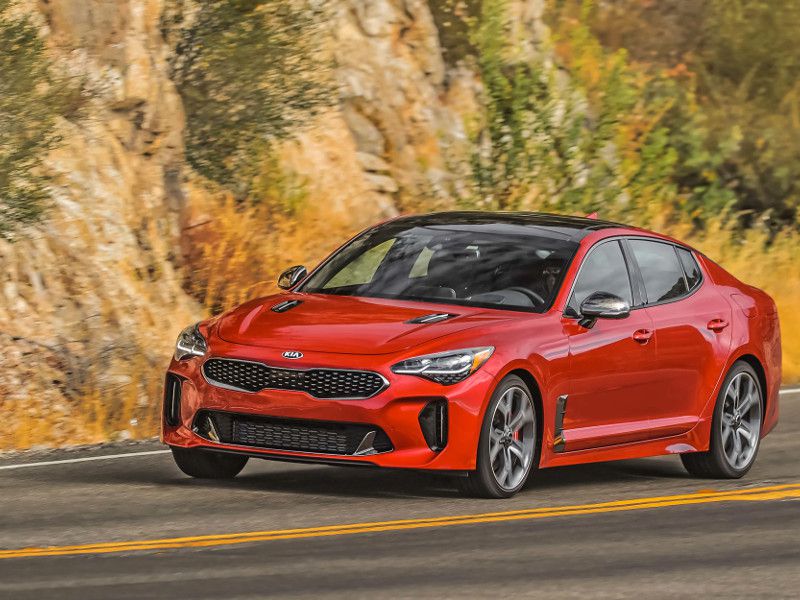
Photo by Kia
2019 Subaru BRZ
Subaru’s only current front-engine/rear-wheel drive vehicle was developed in partnership with Toyota, and made its debut as a 2012 model. The 2019 Subaru BRZ is a 2+2 coupe, and no convertible version is currently available from the factory.
There are two trim levels of BRZ: Premium (starting at $25,795) and Limited (starting at $28,645). Each trim uses a 2.0-liter BOXER horizontally opposed four-cylinder engine that is naturally aspirated (non-turbo) to produce 205 hp and 156 lb-ft of torque with a six-speed manual transmission. Limited models are available with a six-speed automatic transmission, mated to a slightly detuned version of the BOXER (200 hp/151 lb-ft of torque).
The light-weight BRZ (2,789 lbs – 2,798 lbs) sits low to the ground and delivers sports car handling at an economy car price, making it a strong competitor to the base Mustang.

Photo by Subaru
2019 Toyota 86
When it debuted in the U.S. as a 2012 model, the Toyota 86 was known as the Scion FR-S. The 2+2 coupe took on the Toyota 86 name beginning with the 2017 model year. Developed in partnership with Subaru, which sells its version as the Subaru BRZ, the 2019 Toyota 86 is a front-engine/rear-drive fastback hardtop coupe.
Three trim levels are offered: 86 (starting at $26,455); GT (starting at $28,585); and TRD Special Edition (starting at $32,420). The 2.0-liter horizontally opposed four-cylinder engine produces 205 hp and 156 lb-ft of torque with a six-speed manual transmission (86 and TRD), and 200 hp and 151 lb-ft of torque with a six-speed automatic transmission (GT).
The TRD version comes with enhanced braking, aero and other TRD goodies and upgrades, making it a good entry-level track car to compete with similar Mustang models.
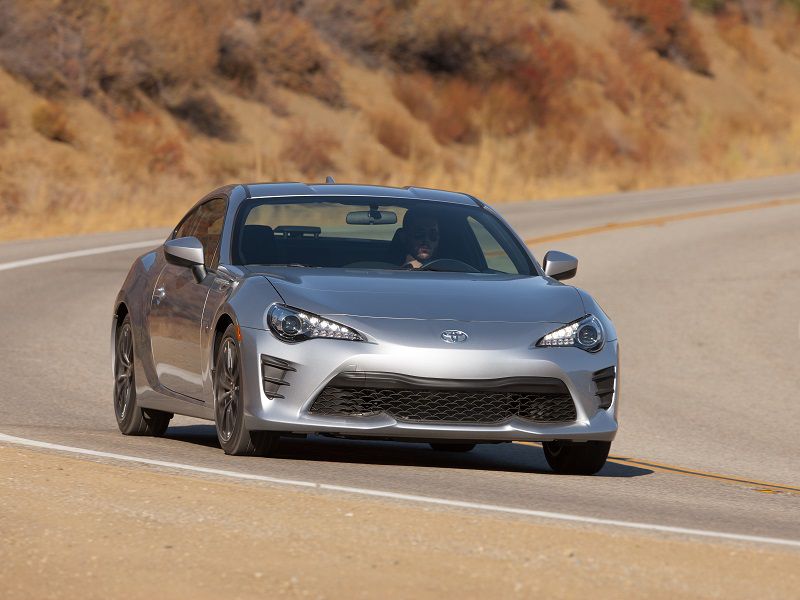
Photo by Toyota
2019 Volkswagen Golf R
What is a compact five-door hatchback doing on this list? The 2019 Volkswagen Golf R (starting at $39,785) makes a compelling case for itself with a 2.0-liter turbocharged inline four-cylinder engine that makes 292-hp and 280-lb-ft of torque, and uses a seven-speed DSG automatic transmission with standard 4Motion all-wheel drive to scoot from 0-60 mph in 5.0 seconds flat. Golf R is a driver’s car, with balanced handling, great acceleration, and razor-sharp steering.
Now in its seventh generation since 1974, Golf has heritage that competes with Mustang, clocking in at 45 years of continuous lineage. The original hot hatch holds a place in many drivers’ hearts, and is a time machine for those whose youthful daydreams went beyond the conventional muscle car.
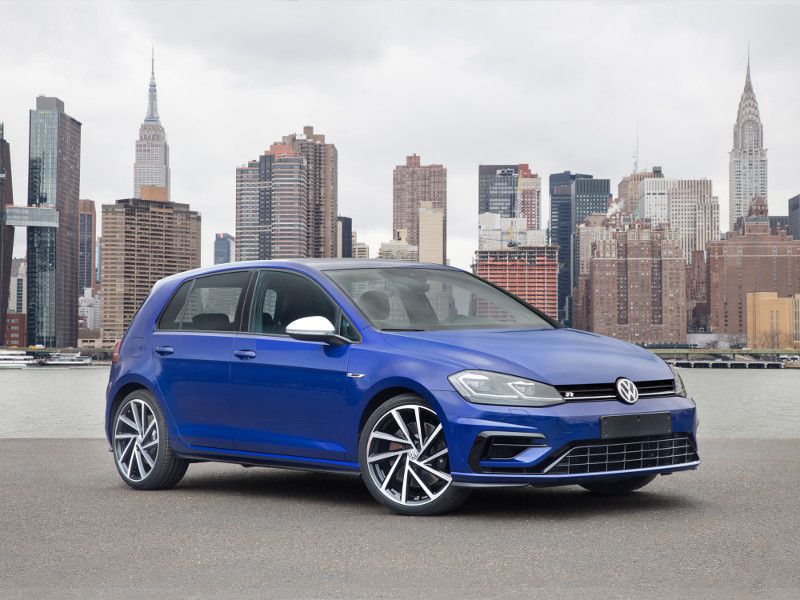
Photo by Volkswagen